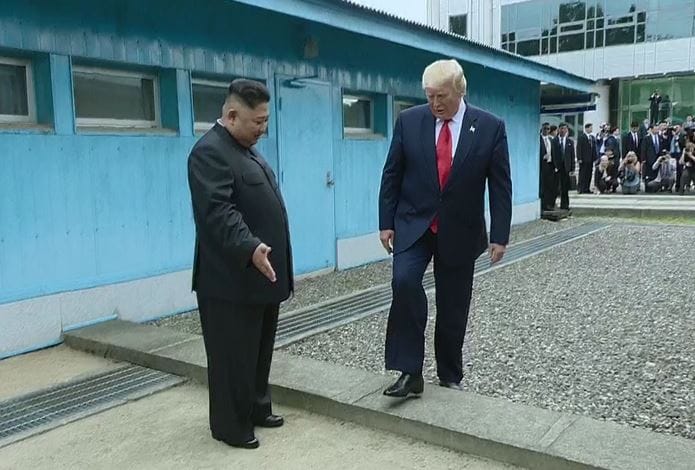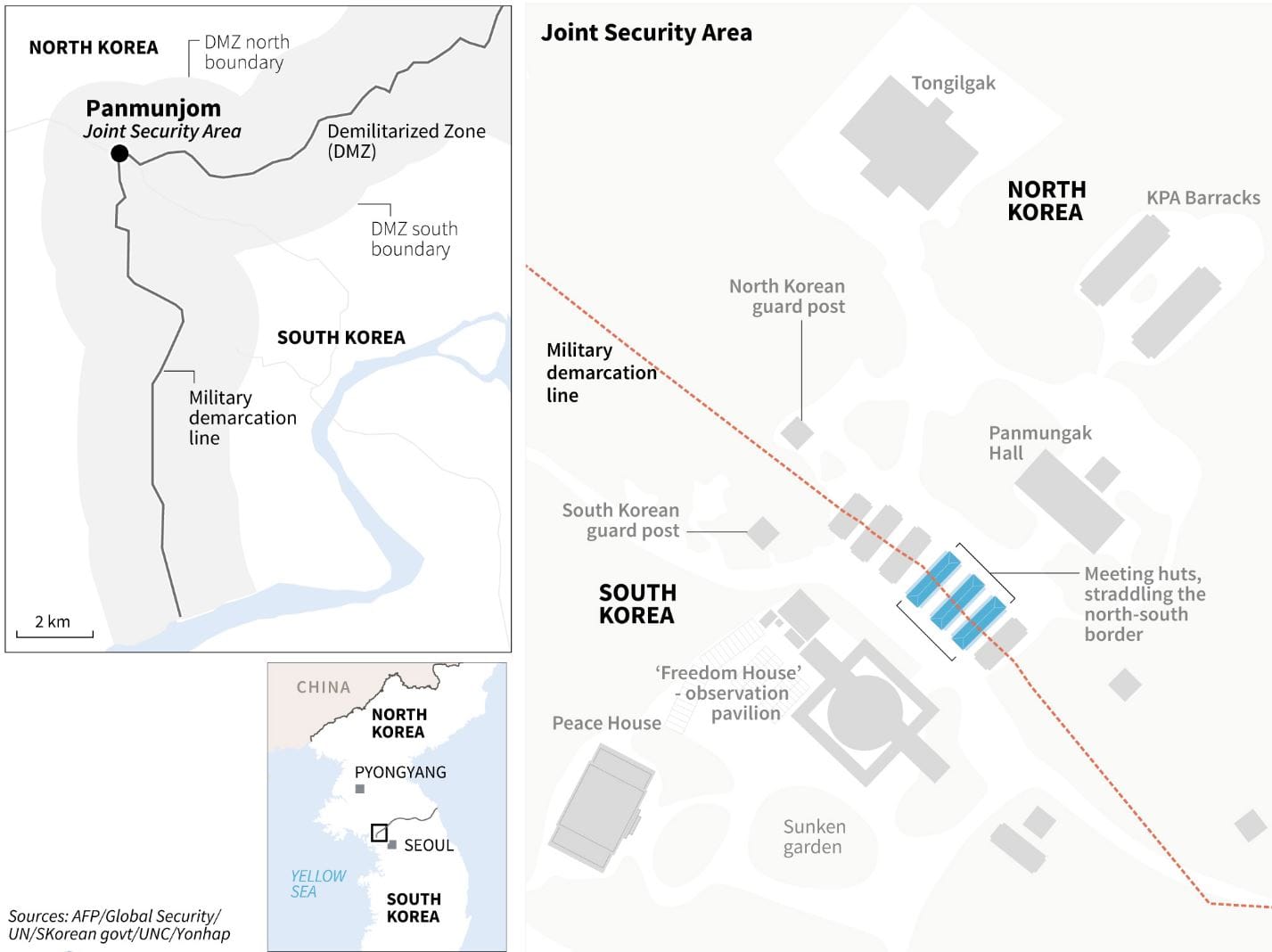A paper tiger can't scare hyena
Introduction to JSA



Many foreign tourists often confuse the DMZ tours, which include the Third Tunnel managed by the city of Paju, with the JSA tours managed by the United Nations Command. However, many people likely remember the location with the blue buildings where the former U.S. President Trump met North Korea's dictator in 2019, a place known as JSA, or "Panmunjom" in Korean. The term "JSA" was relatively unfamiliar to South Koreans until it became widely known after the movie "JSA" was released in 2000.


The map of JSA on the left, and The fake honeymoon phase on the right
The Joint Security Area (JSA) is a neutral area around 800 meters by 400 meters, located approximately 1.4 kilometers south of where the ceasefire talks and the Armistice Agreement took place during the Korean War. The purpose of establishing the JSA was for both sides to operate the Military Armistice Commission jointly, to prevent military clashes, and to seek peaceful resolutions during the ceasefire period. Today, soldiers from South and North Korea confront each other across a 50 cm military demarcation line drawn on the ground, but from the Armistice in July 1953 until the "Axe Murder Incident" in August 1976, soldiers from both sides could move freely within the JSA, even sharing cigarettes and personal conversations. (According to testimonies from that time, South Korean soldiers would pass photos from Penthouse magazine to North Korean soldiers or play pranks by mixing laxatives into M&M's, making their counterparts spend the entire day running to the bathroom.😅)


On June 30, 1975, U.S. Army Major W.D. Henderson, assigned to the United Nations Command, was severely beaten by North Korean soldiers in the Joint Security Area of Panmunjom on the left photo. The Axe Murder caught on surveillance camera in 1976 on the right photo. The person wearing a helmet in the upper left is Lieutenant Barrett being attacked with an axe. The person collapsed in front of the truck, with only their feet visible, is Captain Bonifas. Lieutenant Barrett was discovered an hour and a half after the attack. He was still alive when found but died during evacuation.
In April 1975, when the communist forces of North Vietnam unified Vietnam under communism, the North Korean leadership, inspired by this event, initiated various provocations for communizing the Korean Peninsula. They expected the U.S. would not involve itself in another foreign war, given the anti-war sentiment following the Vietnam War, and thus continually provoked the withdrawal of U.S. forces from South Korea. One such incident occurred on August 18, 1976, when North Korean guards killed two U.S. officers with axes while they were trimming a poplar tree that obstructed the view of UN forces in the JSA. In response, a state of emergency was declared, with Defcon 3 issued. However, instead of strong retaliation, the U.S., under Ford’s administration, merely cut down the poplar tree in an operation known as "Paul Bunyan." After this incident, a military demarcation line was drawn even within the JSA, restricting free movement and leading to the current state of standoff between South and North Korean soldiers.


Private Travis King of the U.S. Army, seen from behind during a visit to the Joint Security Area (JSA) at Panmunjom. Shortly after this photo was taken, he crossed the military demarcation line into North Korea while laughing
Subsequently, there have been numerous incidents and accidents in JSA.
In 1984, an incident occurred when a Soviet citizen studying in North Korea defected to the South while touring Panmunjom, causing a firefight between the two sides. In January 1991, a South Korean JSA soldier defected to the North. I visited the JSA in July 1991 as a member of the 2nd Infantry Division, but only the U.S. soldiers were allowed to leave the secured bus, excluding South Korean soldiers,😥 likely to prevent further defections. In November 2017, a North Korean soldier drove a jeep across the military demarcation line into the South; the pursuing North Korean guards shot him, but he was miraculously saved after multiple surgeries. The latest incident occurred in July 2023, when a serving U.S. soldier defected to the North during a JSA tour. Facing disciplinary actions in South Korea and dishonorable discharge upon return to the U.S., he chose to defect to North Korea. Jesus!😱, life in a US prison would be way better than living in Pyongyang, North Korea.😅 Having been incarcerated for about two months, he was eventually released in Beijing, China. As a result of this incident, JSA tours are currently suspended.😞

During the previous liberal South Korean government in 2018, an agreement with North Korea aimed at removing the military demarcation line within the JSA to restore free movement between the North and the South. However, negotiations fell apart when North Korea demanded the withdrawal of UN forces from the JSA. While the South Korean leftists claim that removing the demarcation line within the JSA would bring peace to the Korean Peninsula,😡 it is more likely to provoke further North Korean aggression, thereby escalating military tension. After failing to strongly retaliate against the axe murder in 1976, the international community derided the U.S. as a "paper tiger." The only way to deter North Korean provocations is to demonstrate strong military might.✔️




Comments ()